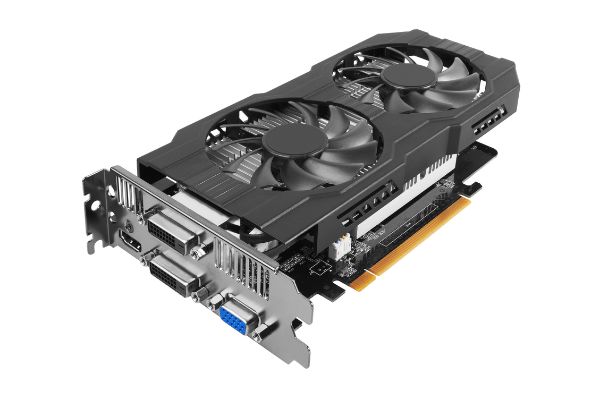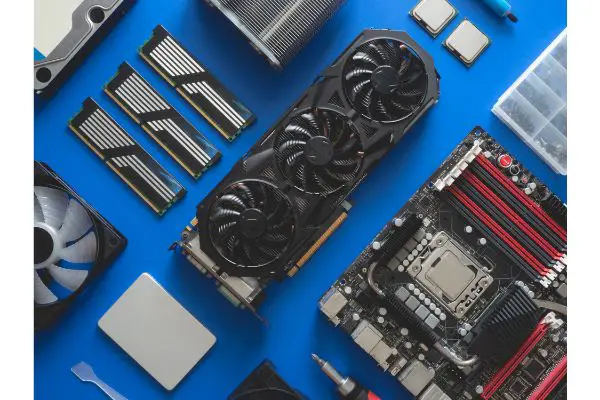Disclaimer: This post may contain affiliate links, meaning we get a small commission if you make a purchase through our links, at no cost to you. For more information, please visit our Disclaimer Page.
Computers are nice for running calculations, helping us use programs, and get business done throughout a variety of industries. However, they’ve long been a favorite medium through which people can enjoy entertainment options as well.
One of the favorite ways many people enjoy computers in their leisure time is through playing video games. Many such games in the past had simple graphics, but modern gaming has become an increasingly resource-intensive hobby.
Sometimes, you may need the best graphics cards the market can offer in order to run a game at its full specs. Some gamers might experience frequent issues when trying to play the titles of their choice, and they might wonder if graphics cards could be the cause.
We’ll discuss how graphics cards might fail, why that might be, and what you might do to stop this problem from happening.
Table of Contents
Can a Graphics Card Cause a Game To Crash?
The graphics card in your desktop or laptop is a big part of what determines the kinds of games you can play. In general, the card is responsible for helping with the creation and rendering of animations, direct videos, or images.
While it can certainly be helpful or necessary to have a good graphics card for some professional programs like photo or video editors, these cards tend to shine when you can use them to render crisp graphics for the latest games.
A graphics card might cause a game to crash, but this is usually because of secondary factors that are associated with the card.
In other words, the card itself might be fine, but there could be things that have an external effect on it that cause it to cease functioning. When your graphics card fails, the system can’t keep running the games you’re playing, and you are faced with a crash to the desktop. In other cases, you may get some kind of blue screen or full shutdown and restart of the computer.
Before we dig into some possibilities of game crashes and how graphics processing units are related, it is important to remember that some cards only support some types of games. If you’re trying to run a game that is just above the maximums that your graphics card can handle, you may be able to play the title for a short time before the system freezes.
Therefore, it is a good idea to check what the GPU requirements are for any game. That way, you can make sure you aren’t putting undue stress on your card by running a game that is too intense for it to handle.
Why Does My Graphics Driver Keeps Crashing?
Like many things in your computer’s setup, the graphics card has drivers that go along with it. You can think of drivers as a set of instructions that tell the graphics cards or other hardware how to do what they need to do. GPUs and other things operate within the framework of the system, and drivers help them do their tasks in a way that is useful to that system.
Without proper drivers, or if you’re dealing with drivers that are faulty, the card won’t know how to do its job. When this happens, a crash when playing a game is much more likely.
There could be a few reasons the drivers keep forcing the card to stop functioning, which will usually force your game to close completely and send you to the desktop. The drivers could be corrupted, outdated, or even missing entirely.
Whatever the case, you can repair or reinstall them to see if the issue corrects itself.
1. Go to your Windows ‘Start’ button and search for ‘Device Manager’.
2. Once it pops up, click on it to open the respective program. It is here that you will see a complete list of all the hardware your computer uses, including any devices or peripherals attached to it at the time.
3. Your graphics card should be listed under the category of ‘Display adapters’. Click on this part of the pane to expand the list and see all the applicable display adapters.
4. Find the proper name of your GPU. Right-click on this item so that another list appears. Select ‘Update’ from that list.
5. Your GPU may need more recent drivers that the manufacturer developed and put out recently. Updating these drivers may solve your issue.
6. If an update doesn’t work, you can try uninstalling the drivers for your GPU completely using the same list you got when you opted to update them.
7. You’ll need to allow the Device Manager to scan for hardware changes and reinstall the drivers after the uninstall job.
Can a Graphics Card Get Corrupted?
Graphics cards are critical to any kind of display your computer needs to do, and they are crucial not only for playing games. Unfortunately, there are cases when graphics cards could get corrupted and start to fail or cause problems.
A GPU that fails completely could make your entire system virtually unusable until you replace the dead component with a working one. The cards can fail for a few common reasons. Some of them are easy to diagnose using software that is designed to detect issues, but other problems may be trickier to spot.
First, improper installation of the card itself could cause problems over time that lead to eventual failure. The card needs to be stable and have its proper seat in the right place within the system’s hardware. Any deviation from this could cause the fan to not cool the GPU properly. Otherwise, certain connections the card makes with the system might not be stable.
Second, too much overclocking can also corrupt the card. Overclocking is a method by which gamers and hobbyists can set their components to run at a faster rate than the one set by the manufacturer.
In most cases, it is the CPU or the GPU that people will want to overclock. While there are some advantages to overclocking, doing it can also hurt your components if you are not sure how to go about it.
Increasing the clock rate can also increase the heat the component generates or cause it to wear out faster, moving it further toward corruption.
Third, accumulations of dust or lint can cause a slow corruption of the GPU. This debris gets clogged in the physical spaces of the card itself and in the mechanical parts that help it run. This can lead to problems with heat retention and other issues over time.
If there is a big problem with the GPU retaining too much heat, it may cause corruption in some of its processes that forces it to shut down during resource-intensive games and other tasks.
How Do I Know if My Graphics Card Is Faulty?
Finding out there is a fault in your GPU is not fun, but you do have ways of assessing whether there might be a problem. In some cases, the issue might have an easy fix that you can perform in order to keep the card going.
There might be some faults or bigger problems that point to the card dying or being unable to handle the setup you want, and this is a bigger fault that might only be alleviated by a different GPU. There are a few signs you can look out for, and we will go over them below.
1. Visual stutters on your screen could indicate a faulty GPU. However, it is worth noting that problems with RAM, malware, or the CPU itself can also cause stutters in the display.
2. If you notice digital tears or strange colors on the screen when playing a game or film, it could be a sign that your GPU is on its way out.
3. Artifacts on the screen are sort of like glitches, but they will appear as strange, persistent shapes that shouldn’t be there. Sometimes, you can solve this issue with a restart. However, that may not work for a GPU that is going bad.
4. Computers that encounter serious problems might give you blue screens. Much like the visual stuttering we mentioned earlier, a blue screen could have several causes.
However, if they tend to happen a lot when you’re playing modern games on high settings, a faulty graphics card could be the culprit.
How Do I Stop My Graphics Card From Crashing?
Graphics cards should work fine with no intervention from the user, but there are still things you can do to mitigate the risk of your GPU having any problems.
It is important to make sure that the fan connected to the card is in working order and running smoothly.
The fan keeps the hardware cool when it heats up as you’re playing resource-intensive games. You should also keep the area free of dust or debris. In both cases, some disassembly may be required so that you can clean the parts out.
It is a good idea to keep your display drivers updated to the latest versions, too. You should also consider running games on lower than maximum settings if your card is a bit older.
Conclusion
The graphics card is a bit like the eyes of the computer, working in tandem with the CPU as its brain. A good card can show us amazing, high-definition videos or the latest in gaming, but even simple cards are necessary for any kind of visual display on a desktop or laptop.
Sadly, graphics cards can encounter some issues that cause them to fail, or they may not be able to run all the programs or games you would like.
There are some things to look out for when it comes to card failure, and there are a few things you can try to restore your GPU to good working order.


